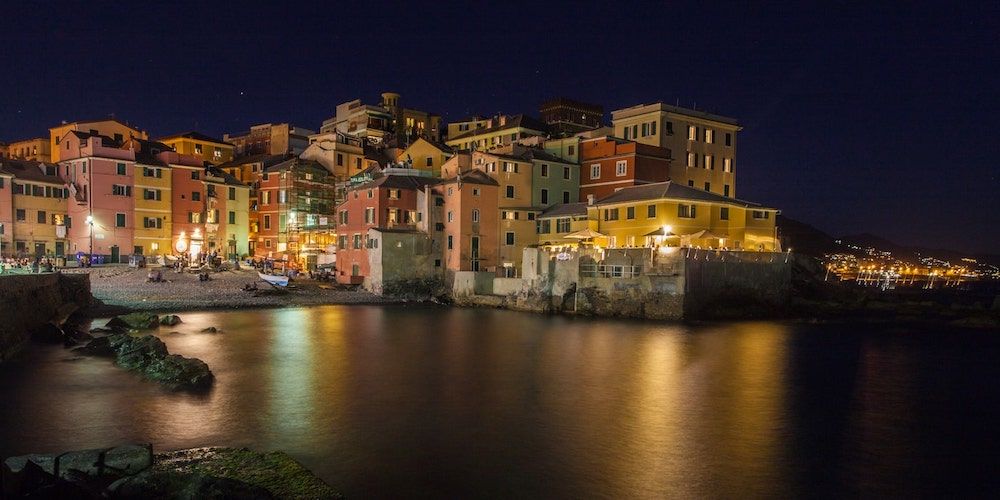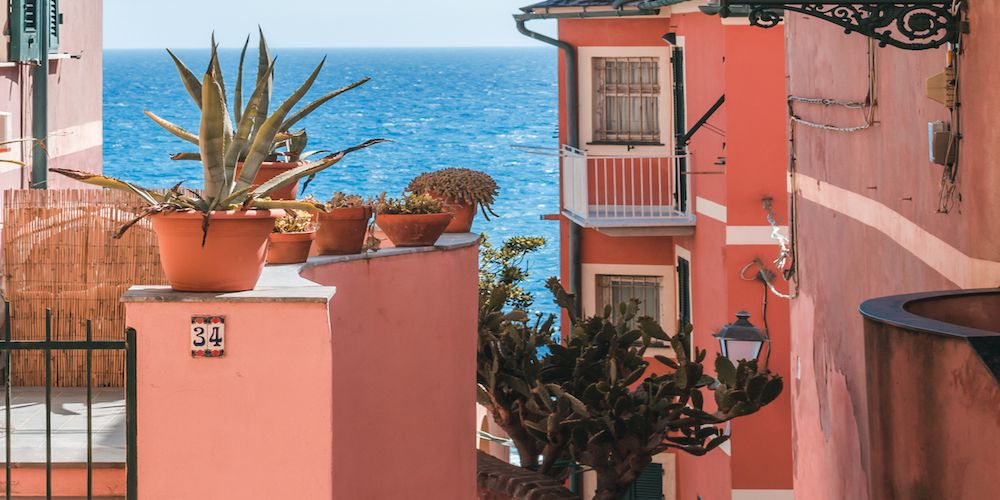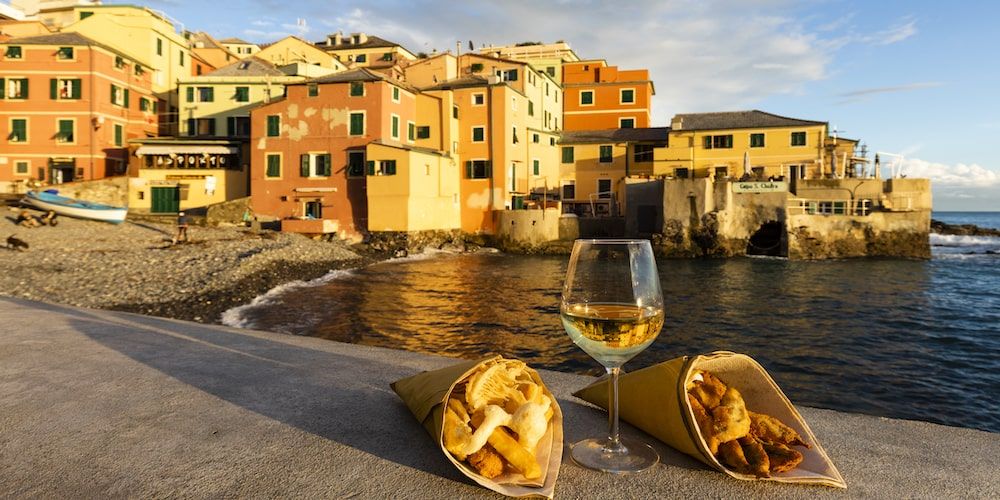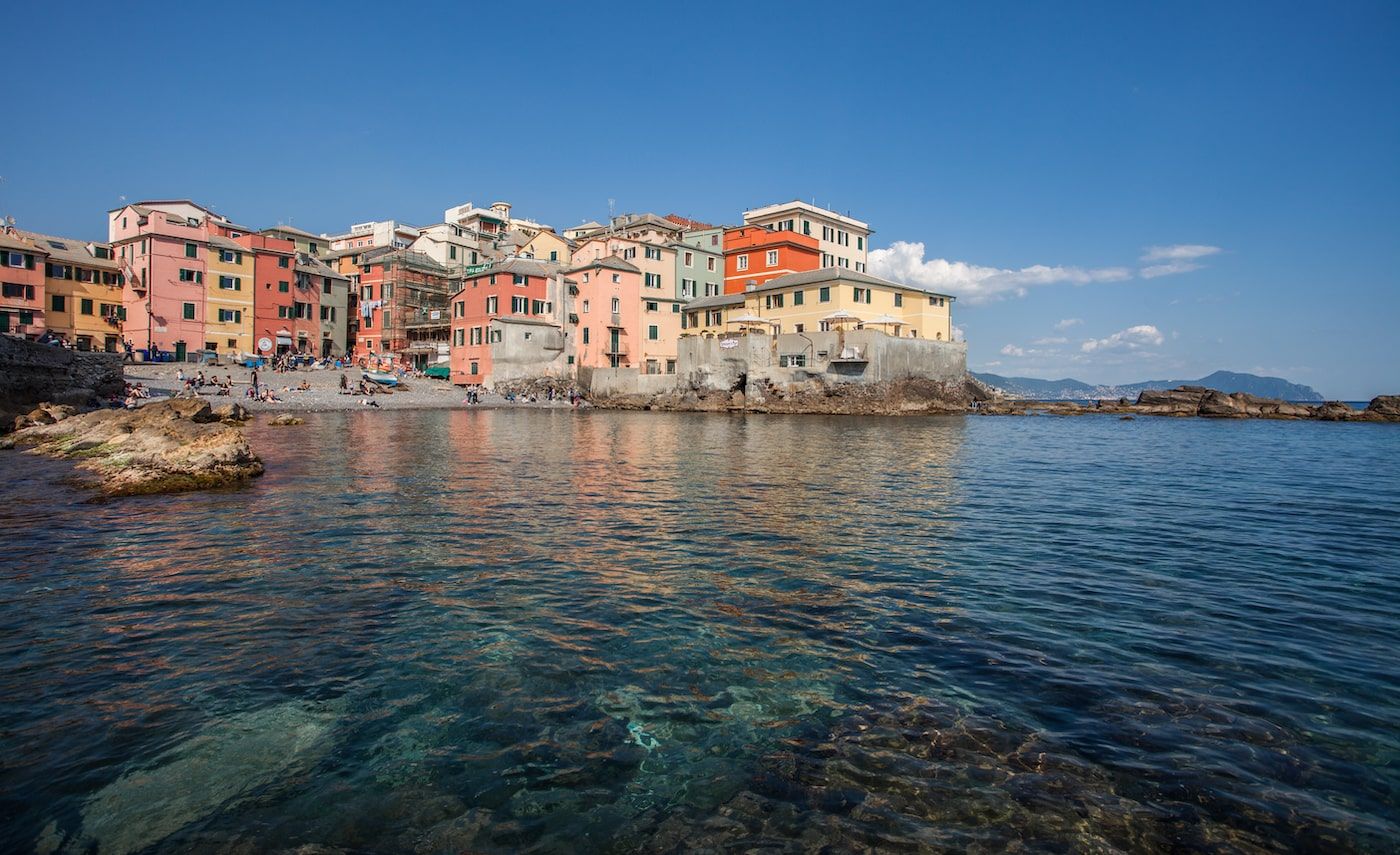A village that feels like it was pulled straight out of an old postcard, with pastel-colored houses reflecting on the sea and a tiny harbor scented with nets and salt air.
Boccadasse, a district just east of the city center, is a true escape from the city’s pace—an enclave suspended between the sound of waves rocking the fishermen’s boats and the calm that wraps around you as you pause on the pier, gazing at the horizon.
Wandering through the narrow alleys of this ancient village means uncovering the truest essence of Genoa and Liguria, far from the crowds, amidst surprises and age-old traditions. By simply following your curiosity, you’ll stumble upon the stories, secrets, unexpected corners, and little details that make Boccadasse a place to experience in wonderful simplicity.

A dive into the history of Boccadasse

Boccadasse, fried seafood, photo by XEDUM sm
The name “Boccadasse” is believed to come from the shape of the bay, which resembles a donkey’s mouth (“bocca d’âse” in the Genoese dialect). But beyond these stories and etymological legends, this charming village is deeply rooted in a long maritime tradition: fishermen used to haul their boats ashore, and daily life for the families revolved entirely around the sea.
Over the centuries, Boccadasse has remained true to itself, preserving its picturesque village charm despite the city’s growth. In fact, it’s precisely this ability to maintain its authenticity, while being an integral part of Genoa, that makes Boccadasse such a special place.
It’s fascinating to think that until the 19th century, it was a "suburban" village. Today, it sits fully within the urban fabric, yet wandering through its alleys you’ll feel like stepping back in time.
The charm of Boccadasse: just minutes from the heart of Genoa
🥇 Visit Italy’s brand partnership
Getting to Boccadasse is easy. It’s surprisingly close to the center of Genoa, and in just a few minutes from the city’s heart, you can find yourself immersed in the calm of the village, ready to be delighted by its most hidden and charming corners.
For those who prefer public transportation, city buses provide a convenient option, with stops in Corso Italia or Via Felice Cavallotti, just a short walk from the beach.
You can also get there by bike via the bike path which runs along much of the seafront and offers a safe and scenic route.
If you enjoy walking, the stroll from the city center is fairly long but certainly scenic; alternatively, you can take a bus to the beginning of the elegant Corso Italia, Genoa’s promenade, from where you can reach Boccadasse in about 30 minutes, admiring the sea views and the stylish Art Nouveau buildings along the way.
Discover more about the Genoa territoryThe atmosphere of Boccadasse beach
At the heart of Boccadasse lies its small beach, framed by pastel-colored houses and fishermen’s nets. The boats pulled up on the shore almost seem to be waiting for you, inviting you to sync with the slow rhythm of the village and the sound of waves gently lapping against the pebbles.
The beach’s compact size gives it an intimate atmosphere, one that makes you forget, if only for a moment, the city just behind it. It’s no wonder it’s so beloved by both locals and visitors of all ages.
Here, you can lie in the sun, take a refreshing dip in the Ligurian Sea, or stroll slowly along the shore, watching the fishermen tending their boats, listening to children laughing as they play, and breathing in the Riviera air that accompanies you step by step. It’s easy to feel instantly in tune with the unique, magical rhythm of Boccadasse.
Sant’Antonio: the church by the sea that captures the spirit of Boccadasse
Overlooking the sea, the Church of Sant’Antonio in Boccadasse has a striking presence: its charming white façade stands out against the sky, while right beside it a panoramic terrace opens up, offering breathtaking views of the bay and the colorful houses of the village.
It’s hard to imagine that, when it was first built in the 17th century by the fishermen of Boccadasse, it was just a simple chapel. Only at the end of the 18th century was it expanded and transformed into the church we see today.
As you step inside, you’ll find yourself in a single, simple nave—almost bare, yet filled with stories. Hanging on the walls are small model boats: ex voto left by fishermen and sailors who gave thanks for returning safely from the sea. Take a moment to admire the floor’s decorative patterns as they lead you toward the modest yet evocative altar.
Sant’Antonio stands as a bridge between the heart of the village and the scenic promenade of Corso Italia. For this reason, it is not only a historical monument to admire but also an essential stop to truly experience the atmosphere of this enchanting corner of Genoa.
Charming alleys and ancient paths: the crêuze

Creuza in Boccadasse, photo by C.Fanni
From the Church of Sant’Antonio you can walk down a staircase that leads back to the beach, or take Via Aurora to immerse yourself in the very heart of the village.
Via Aurora is one of the narrow and evocative streets that shape the oldest part of Boccadasse, surrounding you with an atmosphere suspended between past and present. As you wander along these picturesque lanes, between the close stone walls and the colorful façades of the houses, you’ll feel as if you could almost touch the everyday life that has animated the Ligurian Riviera for centuries.
From Boccadasse also branch out the crêuze, ancient stone mule tracks typical of Liguria: paths that once connected the sea with the hills and that still retain a unique charm today. Walking up these narrow, quiet climbs, you leave the little beach behind and discover unexpected views and scenic spots, in a weave of scents and voices that make the village feel alive and authentic.
Life in a coastal village: gelato and aperitifs

Aperitif in Boccadasse, photo by Matteo Carassale
The beach, the church, the colorful houses, and the crêuze—all these make up the heart of Boccadasse. But the village isn’t just these sights; it’s meant to be fully experienced, letting yourself be captivated by the small pleasures that define this magical discrict.
Its gelaterias are famous among locals and attract visitors of all ages. Stop to savor a handcrafted gelato, enjoying every spoonful accompanied by the scents of the sea, or take your time with an aperitif, watching the sunset while enjoying a paper cone of fried seafood or sipping a drink in one of the lively bar along Piazza Nettuno, just behind the beach.
When the sun sets, the façades of the houses glow in shades of pink and orange, and in those moments Boccadasse becomes a tiny romantic haven where you can be fully enveloped by the charm of an authentic fishing village.
Boccadasse: a village that inspires
As we’ve seen, there’s something truly special in the air of Boccadasse—a feeling that draws you in and sparks your imagination.
You should know that this picturesque corner of Genoa has inspired some of Italy’s greatest artists. One notable example? The legendary Genoese singer-songwriter Fabrizio De André loved Boccadasse and its timeless atmosphere, where he could find ideas and images to transform into songs.
Close your eyes, and you can picture him walking along the beach, listening to the whispers of the fishermen and the stories carried by the waves, while the entire village around him transforms into a serene oasis.
Also, the writer Andrea Camilleri has always had a soft spot for Genoa, especially for Boccadasse, so much so that he set the home of Livia, Commissioner Montalbano’s fiancée, right here.
Because Boccadasse is truly one of a kind: a unique place that surprises every visitor, welcoming you quietly and leaving you with a little piece of its magic.
Boccadasse not to miss: what to see and experience in a timeless village
If you think you can arrive in Boccadasse and stick around just long enough to snap a few photos, think again. Take your time exploring, breathe in the sea air, and let yourself be charmed by the little details that make this corner of Genoa so unique, with its atmosphere straight out of a traditional fishing village.
Here’s a quick recap of what you absolutely can’t miss in this magical district:+
- The beach of Boccadasse: the heart of the village, where boats pulled up on shore and calm waters invite you to pause, take photos, and soak in the maritime atmosphere.
- The Church of Sant’Antonio: standing proudly by the sea with its white façade and panoramic terrace, while inside, the sailors’ ex votos tell the story of Boccadasse’s maritime traditions.
- The crêuze: the characteristic Ligurian stone alleyways that wind between the houses, revealing quiet corners and hidden viewpoints to discover.
- Experiences to enjoy: stop by a gelateria or sip a drink at sunset, as the colorful façades glow in shades of pink and gold.
FAQ about Boccadasse: everything you need to know
1. Why is Boccadasse famous?
For its timeless charm as a fishing village: pastel-colored houses, boats pulled up on the shore, and an authentic atmosphere that has inspired artists and singer-songwriters.
2. How do you get to Boccadasse?
It’s located on the eastern side of Genoa, toward the Riviera di Levante. You can easily reach it by bus, taking line 42 from the city center or line 15 or 31 from Genoa Brignole station; alternatively, you can walk from the historic center along the Corso Italia seafront, a long promenade that stretches across the entire eastern part of the city.
3. What is the sea like in Boccadasse?
The sea in Boccadasse is clear and calm, and the small beach surrounded by pastel-colored houses creates an intimate, picturesque setting. More than a typical beach, it feels like a natural stage where you can soak in the beauty of the Ligurian Riviera.
4. What can you do in Boccadasse?
Boccadasse has a truly unique atmosphere, and its magic comes through even in the simplest moments: wandering through its narrow lanes, enjoying a gelato, or sipping an aperitif while the church overlooking the sea glows against the colors of the sunset.
5. Does “Livia’s house” really exist in Boccadasse?
“Livia’s house,” as described in Andrea Camilleri’s novels, is an imaginary place. Boccadasse is the village the author chose as the setting for the home of Inspector Montalbano’s fiancée, but there is no real house. For curious readers and fans, though, there is a symbolic reference point: Piazza Nettuno, along the waterfront, is where Camilleri imagined Livia’s residence.
About the author
Written on 15/10/2025




Alessandro Savino
Stroll among the pastel-colored houses and narrow streets of Boccadasse, Genoa’s fishing village brimming with sea, history, and dreamlike atmosphere.